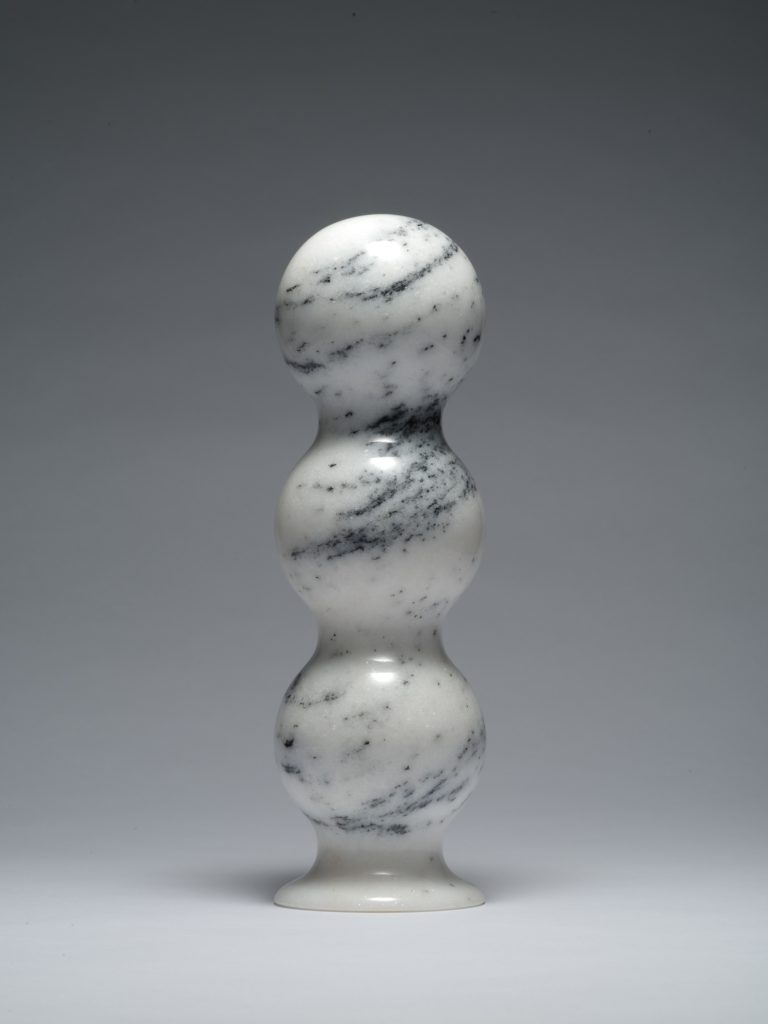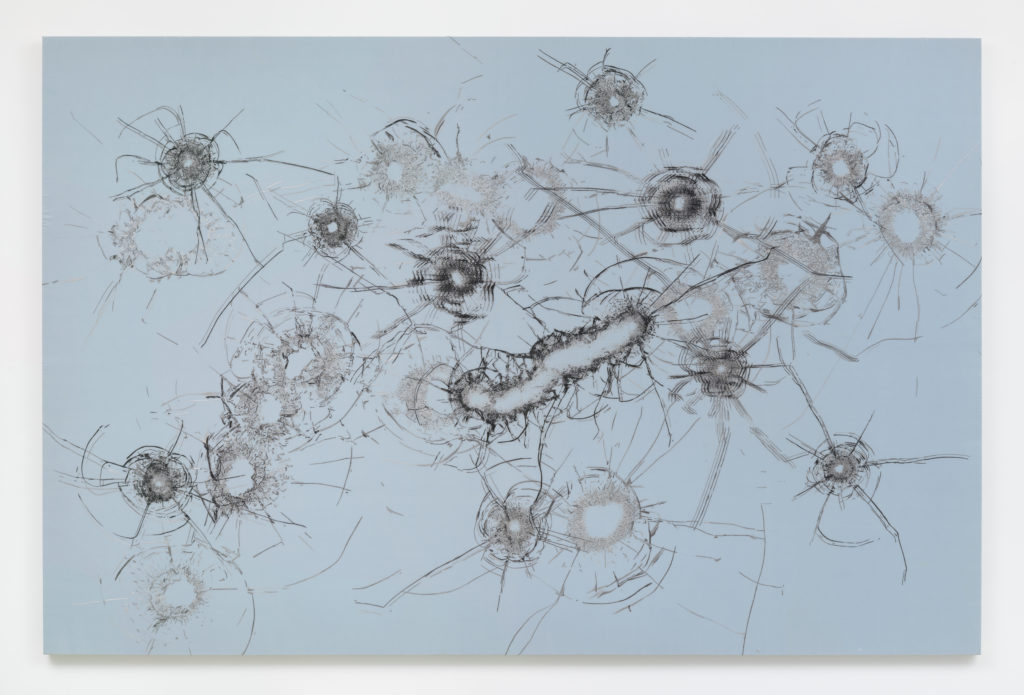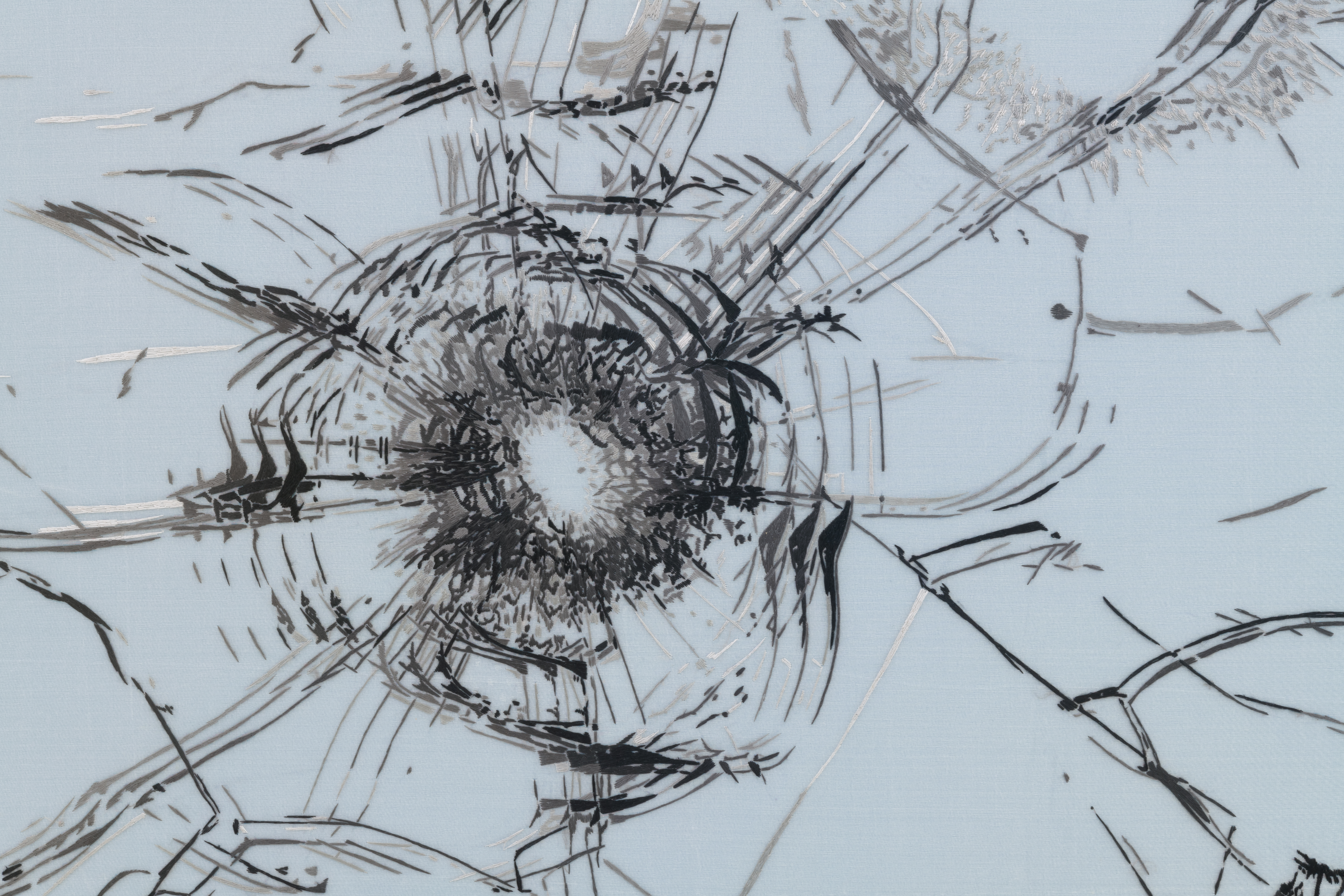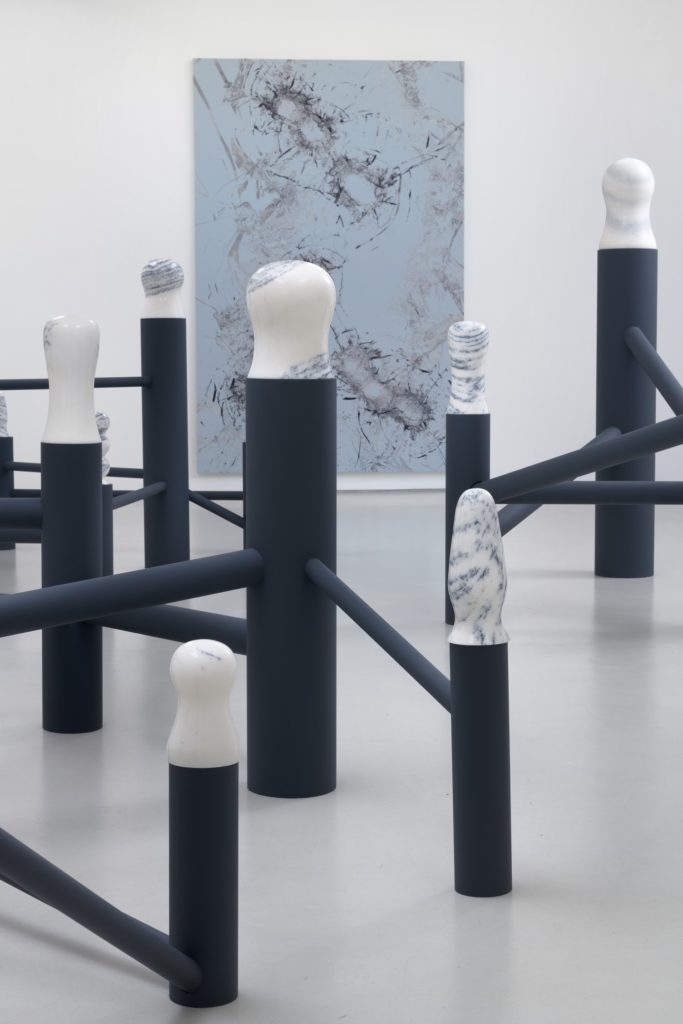Artist Zhao Zhao maps fissures in the fabric of consciousness and society in a new show at Roberts Projects Los Angeles
True to the gospel of minimalism, the simplicity of presentation obscures the complexity of process, tradition and all manner of existential questions in the work of Zhao Zhao. Step back from these large-scale, finely detailed works; crook your head if need be and then zoom all the way in. In the spareness of that moment, you will find the connections.
As humans, we are all fractured in some way. We’ve all had times of resistance or resilience, bending or breaking. It is a connection point of humanity, but one we may not always want to realize. In two sets of works at Roberts Projects — fabric panels and gourd-shaped marble sculptures — Zhao Zhao surfaces these themes with a guided curiosity of his own circumstances, ancestors and mentors.
One of those mentors was noted Chinese artist and social activist Ai Weiwei, who showed all over L.A. last fall himself and who once functioned like Obi-Wan Kenobi to Zhao Zhao’s Luke Skywalker. Born in 1982, Zhao Zhao became an assistant to the artist in 2004 and was with him in the studio for seven years. While there, however, he built a substantial body of his own work, migrating from the oil painting he was trained in to other forms, leading to greater experiments with conceptualization. It is said that he took counsel from his mentor to create works using the materials and moments that surrounded him.

Zhao Zhao, Control 1 (Roberts Projects Los Angeles)
Like Ai Weiwei, Zhao Zhao also espouses a full range of social critiques, not just about politics or the Chinese government, but the human condition. As a result, he has also experienced what it’s like to be in the hands of Chinese authorities — from being arrested to being banned from travel to having his art confiscated. Given the upbeat nature of recent art in Beijing, some of which I witnessed last year, such as the pop spectacle of the vibrant red dinosaur sculpture that greets you at the entrance to the city’s 798 Art Zone and the Living Digital Forest exhibit at PACE, one can only imagine the response to Zhao Zhao’s darker work by the authorities. We suspect the word “crackdown” was taken quite literally.

Zhao Zhao, Constellation 6. Courtesy of the artist and Roberts Projects, Los Angeles (Robert Wedemeyer)
At Roberts Projects through August 10, the artist’s fabric works — all embroidery on silk and titled “Constellation 5-8” — continue his experimentation and fascination with the piercing of violence and the healing of resistance. One notable previous mounting, “Constellations” was shown at Art Basel Hong Kong in 2013, where the artist experimented with taking gunshots to glass, a feat hard to pull off under Chinese law. This series was predated by an earlier work “Fragments,” inspired by patterns formed in glass when Zhao Zhao’s head crashed into a windshield during a car accident.
These fractures, these holes, these wounds if you will, are interconnected via hairline threads — as if jumping from one hub of sorrow to another. Consider this: one of the reasons why glass breaks the way it does is the loose arrangement of its molecules. The random arrangement of these molecules makes glass brittle when stress is applied. According to the American Physical Society, cracks grow because that applied pressure causes atomic bonds to stretch at the entry points. This makes the meticulous, painstaking needlepoint work of Zhao Zhao (which by the way, is made in collaboration with his mother) as he captures the fractal, organic patterns of the fissures all the more revealing, impressive and oddly soothing.

Zhao Zhao, Constellation 6 (detail) Courtesy of the artist and Roberts Projects, Los Angeles (Robert Wedemeyer)
With a little spatial imagination, it becomes possible to perceive the sculptural work shown in relationship to the textile pieces in a parallax view. If the holes that make up the embroidered wall-based constellations are laid flat, their array becomes a bird’s-eye view map for the layout of gourd-shaped marble sculptures. Titled “Control,” these are set in the center of the room, surrounded by the fabrics, and the objects are arranged as constellations themselves. Except in their case, we are inside the patterns, around them, right up on them, connecting with our bodies as well as eyes as we walk among them.

Zhao Zhao, Control (installation view) Courtesy of the artist and Roberts Projects, Los Angeles (Robert Wedemeyer)
Across the two series, these multiple connection points show strength, resilience and an ability to withstand the test of time. In Chinese culture, gourds go beyond the traditional function of vessel to also symbolize sky and earth, or rather, the symmetry of the universe. In black and white marble, these iterations appear like so many obtuse pawns on a modern art chess board. And yet each shape made is distinct in shape and veining, crafted from an intense molding process Zhao Zhao employs, which is shown on an accompanying video in the gallery’s back room.
In a statement the gallery notes that, “the prevalence of human interference to create powerful forms of symmetry, beauty and control, is an easy metaphor for how people — both individually and collectively — comply to another’s domination.” That’s a heavy way to think about control, even heavier than these exquisite marble gourds. But it’s about right — and easier to wrap your mind around in the presence of these idea-driven but assertively materialized objects.
Roberts Projects Los Angeles; 5801 Washington Blvd., Culver City; Tue.-Sat., 11 a.m.-6 p.m., through Aug. 10; free. (323) 549-0223, robertsprojectsla.com.
Advertising disclosure: We may receive compensation for some of the links in our stories. Thank you for supporting LA Weekly and our advertisers.

